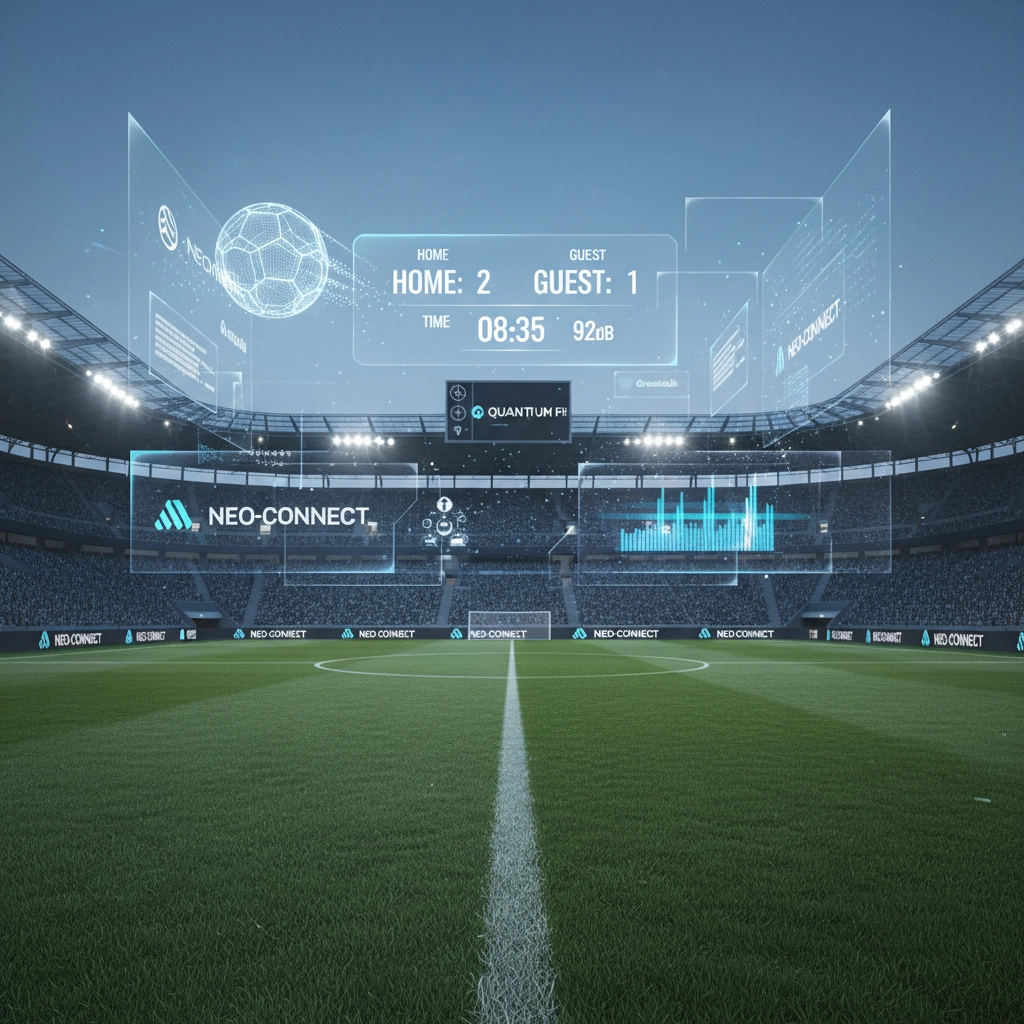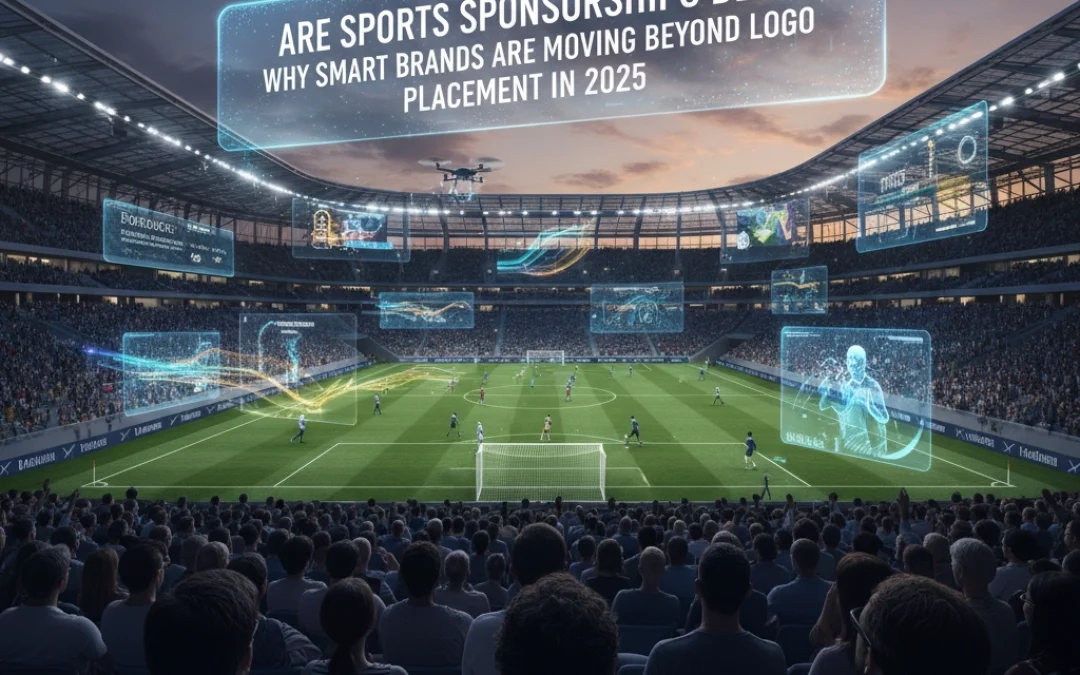Sports sponsorships aren't dead: they're transforming faster than a NASCAR pit stop. The global sports sponsorship market is projected to surpass 45 billion CHF in 2025, representing an 8% increase from 2024. But here's the catch: traditional logo placement is becoming as outdated as flip phones.
Smart brands are abandoning the "slap our logo on everything" approach and embracing sophisticated strategies that reach fans wherever they are: in stadiums, at home on their TVs, streaming on their phones, or engaging on their computers. You need to understand this shift or risk watching your competitors lap you.
The Death of Simple Logo Placement
Logo placement worked when fans had limited viewing options and fewer distractions. In 2025, that static approach fails because modern sports fans consume content across multiple platforms simultaneously. They're watching the game on TV while checking social media on their phone and tracking fantasy stats on their tablet.
Traditional sponsorship focused on brand exposure through static placements. Today's winning brands create dynamic, interactive experiences that engage audiences across every touchpoint where fans consume sports content.

Your logo on a stadium wall reaches fans in the venue. But what about the millions watching at home? What about fans consuming highlights on TikTok later that night? Smart brands design integrated campaigns that follow fans across all these channels.
Data-Driven Precision Replaces Gut-Feel Decisions
Stop making sponsorship decisions based on "it feels right." The era of gut-feel sponsorship has ended, replaced by ultra-personalized, AI-driven campaigns that target fans with content tailored to their specific preferences.
Brands now demand clear performance indicators:
- Views across all platforms (TV, streaming, mobile, desktop)
- Engagement rates on social media
- Direct sales impact from campaigns
- Lead generation from activations
- Cross-platform reach metrics
Rights holders are implementing real-time analytics coupled with hyper-personalized advertising to enhance fan targeting. Smart stadiums use Wi-Fi sensors and mobile apps to gather detailed data on spectator behavior, enabling partners to personalize experiences in real-time.
Picture this: A fan walks past a concession stand, and their phone receives a targeted coupon based on their purchase history and current location. That's precision marketing that extends your reach beyond traditional TV advertising into the venue experience.
Three Game-Changing Trends You Cannot Ignore
Women's Sports: Your Untapped Goldmine
Global interest in women's sports has surged from 45% in 2022 to 50% in 2024. This isn't corporate social responsibility anymore: it's a genuine growth driver with massive advertising opportunities.
The WNBA exemplifies this momentum with a 31% fan base increase over two years and television audiences growing by 201% in 2024. Companies investing in women's sports sponsorships are accessing highly engaged audiences at a fraction of men's sports costs.
Remember: Early movers in women's sports sponsorship are securing premium positioning before prices increase to match demand.
Phygital Activations Bridge Every Channel

Technology is transforming fan engagement through immersive experiences powered by virtual reality, augmented reality, hybrid broadcasts, and sports metaverses. Virtual overlay technology allows digital ad boards to be switched in real-time by geography or viewer profile.
This means smaller advertisers can run highly targeted, short-term campaigns that reach specific demographics watching on different devices. Your message changes based on whether fans are watching on traditional TV, streaming platforms, or mobile apps.
Content Creation Over Event Interruption
Fan consumption patterns have shifted dramatically. Gen Z and Gen Alpha prefer TikTok highlights, YouTube recaps, and streaming documentaries over full matches. This media fragmentation creates new opportunities for sponsors to embed messages within these formats rather than around single live events.
The success of the Tech Golf League (TGL) illustrates this hybrid appeal, attracting 32% of 18-34-year-old viewers who don't typically follow the PGA Tour. Smart brands become content creators, accompanying fans before, during, and after events across their preferred channels.
Building Authentic Partnerships That Matter
Cause-Driven Sponsorships Connect Emotionally
Modern audiences seek authenticity. Partnerships focusing on sustainability, diversity, and community involvement gain significant traction among socially conscious fans. These authentic connections create deeper emotional bonds than traditional logo placements ever could.
Your sponsorship strategy should align with social values that matter to your target demographic. This approach builds lasting relationships instead of fleeting brand recognition.
Digital-First Strategies Expand Your Reach

The expansion into e-sports and influencer collaborations effectively reaches younger and tech-savvy demographics. Brands are becoming true sports content producers, creating engaging material that fans actively seek out rather than passively encounter.
This approach transforms sponsors from advertisers into entertainment providers, significantly increasing engagement and brand affinity.
How SportsMedia.tv Maximizes Your Multi-Platform Reach
The transformation in sports sponsorship requires expertise in television advertising that reaches sports fans across every device and location. At SportsMedia.tv, we understand that modern sports marketing isn't just about TV commercials during games: it's about creating integrated campaigns that follow fans from the stadium to their living room to their mobile device.
Our approach combines traditional television advertising power with digital precision targeting. We help brands reach fans watching on big-screen TVs at home, streaming on tablets, checking scores on phones, and engaging on computers. This comprehensive strategy ensures your message connects with sports fans regardless of how they consume content.
For institutional activities, our partnership with Sportrons.com provides additional opportunities to engage sports audiences through educational and community-focused initiatives. This extension allows brands to build deeper connections with sports fans beyond traditional advertising moments.

Your 2025 Sports Sponsorship Action Plan
Start by auditing your current sponsorship portfolio. Are you still relying primarily on logo placement? If so, you're missing enormous opportunities to engage modern sports fans.
Immediate steps to take:
-
Demand data analytics from all sponsorship partners. Require real-time metrics across TV, streaming, and digital platforms.
-
Diversify your media mix. Combine traditional TV advertising with targeted digital campaigns that follow fans across devices.
-
Test women's sports opportunities. The growth trajectory offers exceptional value for early movers.
-
Integrate content creation into your sponsorship strategy. Become a content producer, not just an advertiser.
-
Embrace cause-driven partnerships that align with your brand values and target audience interests.
The brands winning in 2025 recognize that sports sponsorship has evolved from passive logo placement to active, data-driven, content-rich partnerships. They leverage technology, analytics, and authentic connections to maximize impact across every platform where sports fans engage.
Sports sponsorships are not only alive: they're thriving through this transformation. The question isn't whether sponsorships work, but whether you're adapting your strategy to capture the full value of today's expanded, multi-platform sports audience.
Your competitors who embrace this evolution will gain significant advantages in reach, engagement, and ROI. Don't let them lap you while you're still thinking about simple logo placement. The checkered flag belongs to brands that understand modern sports fans consume content everywhere: and build sponsorship strategies that meet them there.


Recent Comments